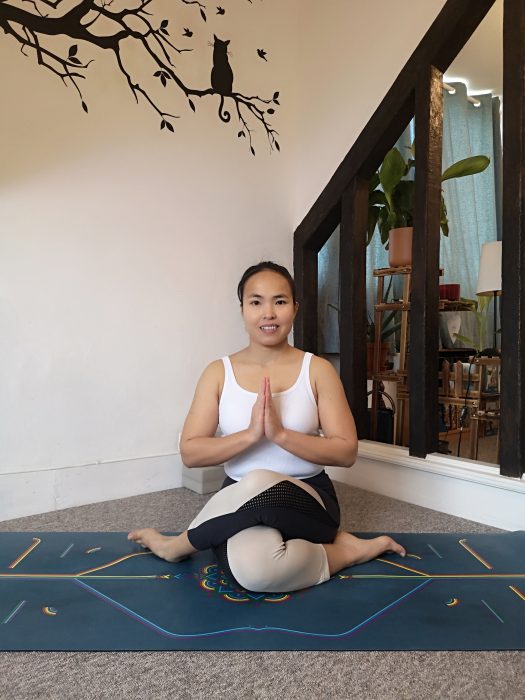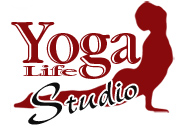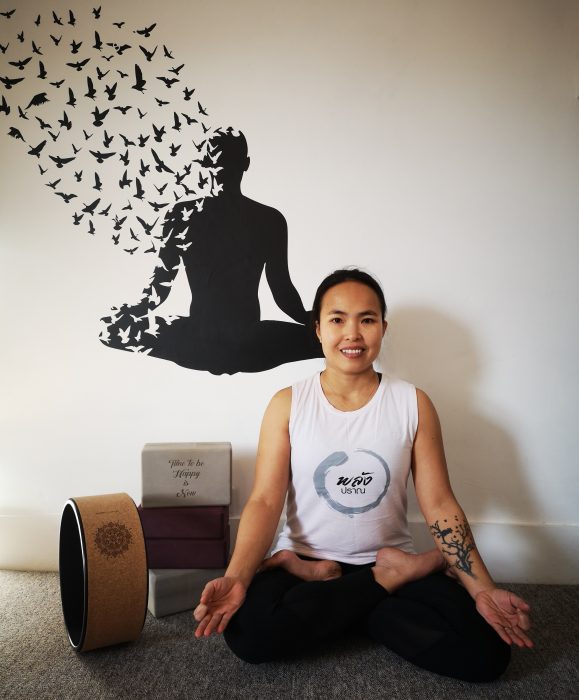ANUSARANGA YOGA with FON
Journey
My name is Kheethachanok, but everybody calls me Fon, and I come from Thailand, where I’ve spent most of my adult life working with Veterinary Charities.
Looking after stray animals, witnessing their suffering and caring for them is very rewarding, but can put a serious emotional burden over you. I always tried to refer to sport and physical activity to unload some of this stress. For several years I’ve practiced Muay Thai (and even did some amateur fights on stage!): that was great for the body, but there was something missing.
I initially started Yoga just for fun, to try something new. I had no idea of the change that would have represented for my life!
Before meeting my Thai Teacher, I didn’t know much about all the dozens different types of yoga. Like many others, I used to look online for some “30 minutes yoga sequence” or similar, and practice along, without concentrating much on breathing, proper alignment etc.
Meeting Kru Dutchi for the first time was a big change of prospective. In a way, it felt like I had to start all over again, and like a new-born baby learn how to take the first steps.
The training begun with learning the Ujjayi breathing.
This technique, also known as “Ocean breath”, brought a whole new dimension to my practice; in a way, is like I never fully “took a breath” before!
During meditation we’re normally asked to observe and be aware of our breathing, but with Ujjayi we try one step forward, to control our breathing and channel it where it is most needed.
Starting from the breathing was also a way to reset myself and what I thought I knew about Yoga. Even before starting the 200 hours Teacher Course I spent many hours at “Dutchi Yoga” studio, in Chiang Mai, and started following Dutchi around Thailand for other workshops and short courses. It was amazing to feel part of a group, and not to be alone in this journey.
Since 2022 I’ve moved to England (I’m still very new!) and I’ve been taking part in classes with various teachers, to continue exploring the variety of Yoga disciplines.
“The road goes ever on” and I feel like Yoga offers us an immense variety of styles and possibilities, I hope to find new companions here in England, to share with me some new experience.
What is Anusaranga?
Like the name suggests, Anusaranga combines two “masters”: Anusara, the “master of alignment”, could be translate as “flowing with grace” and it can be considered a modern branch of Hatha Yoga, and Ashtanga, the “master of mindfulness and prana”, focusing more on the mental and spiritual side.
I firstly came in contact with Anusaranga when I met my teacher, Kru Dutchi, in the Norther-West of Thailand.
According to her, she developed this style in order to combine the different experiences she had during her journey as a Yoga Teacher and synthesise them in an active and intense flow.
The three principles of Anusaranga are: Foundations, Bhandhas and Prana.
The foundations are our main point of contact with the ground, the very base of any Asana (pose) that we might practice during our flow. Depending on the asana your foundations might be your feet (like in Tadasana – Mountain pose) or your hands during Kakasana (Crow pose), or your low abdomen in Dhanurasana (Bow pose).
Being mindful of our foundations will allow us to stay in the asana with more awareness and comfort.
Bhandhas (locks) are the second principle: Mula Bhanda – perineum lock (involving pelvic floor and the genital area), Uddhinya Bhanda – abdominal lock (involves abdomen and diaphragm and stimulates the solar plexus), Jalandhara Bhanda – chin lock (neck and chin), and Maha Bhanda which combines all the previous three in one.
A regular practice of Bhandas will lead to more stability, and new possibilities in exploring more advanced asanas.
Finally, the third principle: Prana, which we control with Ujjayi breathing.
Feeling the “pranic flow”, channelling it into the Asana and harnessing this endless energy is something unique that doesn’t end with the practice itself but carries on with our daily life.
We try to stay in each asana for 3 breaths, trying to “send the breath” down to the joint/muscle we’re working with, before moving to the next pose.
The typical Anusaranga flow will start by opening of the major joints (shoulders and hips) and stretching-expanding muscles and tendons. Back bending, hip opening postures and arm balance will become gradually easier and more familiar.
Since I’ve started, Anusaranga has led me to perform asanas that I initially considered unthinkable! For example, I never thought I could be able to do head-stand, or other inversion poses, but then step-by-step, with regular practice, I’ve managed to get there!
Needless to say, depending on our on individual starting level, we shouldn’t focus on the end result, but appreciate every step of the process, being kind to your body all the time. It is an ongoing study of our own possibilities and limitations, trying to step out of our comfort zone to explore something new, that we used to consider out of our reach.
The ultimate goal of this practice is to achieve a synchronicity between the breath and the movement, allowing you to tap into an inner energy source, reminding us that body and mind are not two separate entities, but a unique and whole wonderful thing.
Why Anusaranga?
Like I said before, I didn’t know what Anusaranga was before meeting my teacher. I understand that for somebody new to Yoga it must be difficult to choose which style would be best for them.
In my personal, and therefore limited experience, I was struck first by the person, then by the technique: Kru Dutchi had such a strong personality and an extensive knowledge build over many years of practicing that I decided to trust her into something that I couldn’t really foretell at the time.
The training with her didn’t stop with the Yoga practice: we undertook several meditation retirements of many days in various Temples, and participated in different seminars and workshops in which other teachers and practitioners would take the lead, allowing me to be exposed to new Yoga styles and to begin a process of self-knowledge that continues to this day.
So: why should somebody try Anusaranga?
“Why not?!” would be my immediate answer! It takes parts of different Yoga styles and combines them in a dynamic, intense and whole experience. Will help you build up your core, make you stronger, gain more flexibility, improve your self-awareness and perhaps make new friends and challenge yourself.
Anusaranga is a very active practice, so if you’re looking for a good workout, you should find it, but if you’re mainly interested in relaxation and unwinding… it might not be the best!
I’d like to close this little article with a final though: “writing about music is like dancing about architecture” said Frank Zappa, and I used to be quite intimidated by the yoga jargon: Yoga is practice, is flow, is fun! I really hope not to have written something too heavy or contorted, and perhaps to have kindled a bit of curiosity for this Yoga practice.
From the beginner level to the more advanced ones, there are plenty of physical and mental benefits to be gained so, why not giving it a try?!
For more information about my classes in Eastbourne, feel free to contact me at info@fonyoga.co.uk or visit my page at www.fonyoga.co.uk



